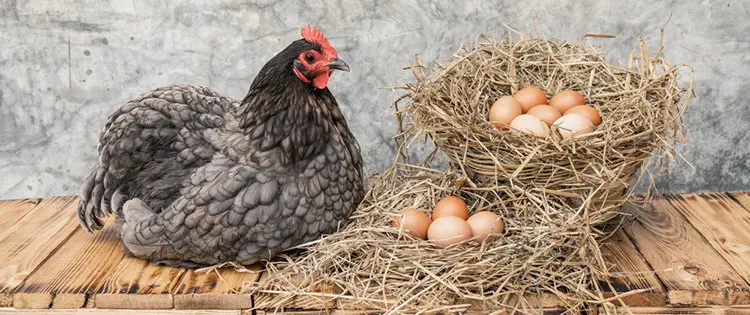Chickens exist in a number of breeds that have been deliberately bred through time to generate particular qualities.
As a result, certain chicken breeds are more appropriate for particular activities than others. The majority of novices are unaware that the breed of chicken you purchase has a significant influence on the number of eggs you might anticipate receiving daily.
Some breeds, like Japanese Bantams, are less likely to lay eggs than hybrid chickens, who may produce about one egg per day and more than 280 eggs annually.
In this article, I’ve compiled a list of my top 6 egg-laying chicken breeds since picking the proper breed is essential if you require fresh eggs all year.
Here are the top 6 chicken breeds for egg production.
1. Sussex
Because Sussex hens are “dual purpose,” you can breed them for either eggs or meat. A Sussex hen may easily lay 240 eggs each year. The most typical hue of the Sussex breed is a body that is entirely white with black feathers on the neck and tail.
Every Sussex bird consumes roughly a quarter pound of food daily. Given that this breed is not known for being overweight, it is advised that you free-feed it. Ensure they have oyster shells accessible in a separate container in addition to their meal; the hens will take it if they need it.
Sussex enjoys being busy and energetic. They will likely spend most of their day scrounging about for food. However, you must keep them occupied and provide them with a variety of activities. They will adore you forever if you can manage some unsupervised free time.

2. Leghorn
The Leghorn must be included in any discussion of the finest chickens for producing eggs. Leghorns are well-known for their effective conversion of feed into eggs, and they were given their name after a town in Italy where the breed largely evolved.
Leghorns come in two varieties: one that has been developed for industrial use and the other, known as a “heritage” kind, which is usually better suited for a serene environment. it is vital to remember that Leghorns are not the birds for newbies to handle.
In addition to laying, Leghorns are not bred to brood, making them rare broody hens. You will need to turn on the incubator if you want chicks since they don’t make good moms and don’t hatch well.

3. Australorp
Additionally, to being a top egg-layer (one record-breaking hen once laid 364 eggs within a year), Australorps have brown eggs and black and green iridescent feathers. It’s hardly surprising that there are many admirers of this Australian breed.
Australorp is a prolific egg layer. The present breed will produce an estimated 250 eggs each year. Depending on the hen, individuals may lay more or fewer eggs. Also, they have a tendency to be hesitant at first, but after they get used to you, they will follow you everywhere.
Related: Ingenious Ideas For Taking Care Of Your Chickens
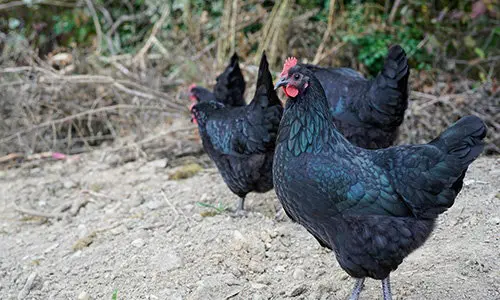
4. Plymouth Rock
A novice chicken keeper seeking a hen that typically produces eggs once every two days should choose Plymouth Rock. Around 200 eggs per year are typically produced by a healthy Plymouth Rock. These eggs are medium-sized and have a light brown hue.
Large birds like Plymouths are far more adapted to living in the wild. They are extremely sociable birds that are simple to tame, much like the Sussex.
Plymouth Rocks are naturally inquisitive creatures who enjoy exploring their surroundings and following you around to see what you’re up to or whether there are any tasty snacks around. This is a really trustworthy hen once you get to know it, and can be very friendly with the family and kids.
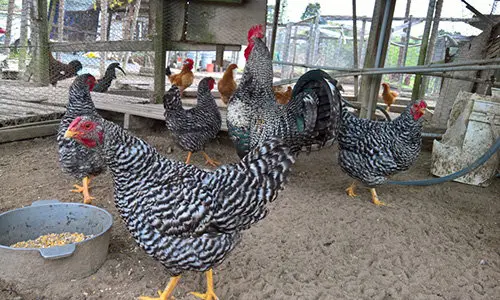
5. Golden Comet
This breed is a favorite in backyards!
The Golden Comet was primarily developed for factory farming, but it has now made its way into many people’s yards and affections. They are well-known for both their lovable demeanor and their notable capacity for egg production. 5–6 medium-sized–to–large, brown eggs are produced each week by this amiable and perceptive breed.
Comets are friendly and adaptable enough to be raised as lap chickens. They get along well with children since they don’t mind being lifted up and carried around and have a very laid-back attitude.
This breed does not frequently get broody and does well in harsh climates. You’ll get a steady flow of eggs for the first two years—almost every day!
Related: 10 Common Mistakes You Should Avoid If You Want To Raise Chickens
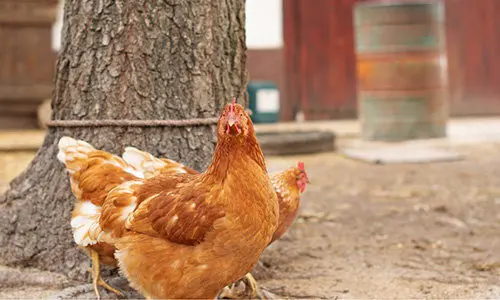
6. Rhode Island Red
Your supply of eggs from Rhode Island Reds might reach 300 per year (the amount varies depending on the strain you have). Around 18 to 24 weeks after birth, you will observe that they initially begin to deposit eggs.
These birds, although prolific layer and highly resilient, are aggressive and will need room to prevent bullying among the flock’s more timid members. Make sure they have adequate room to wander and a setup that allows for it.
No matter where they live, your Rhode Island Reds will require a clean coop, access to water, and a place to lay their eggs.
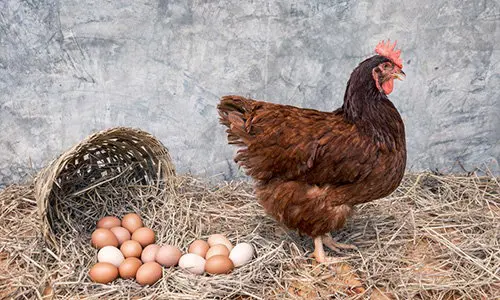
All of these breeds are on the top of the list of the best egg-laying chicken breeds.
You can raise any one of these depending on your liking and methods. However, for laying chickens, high-quality feed is essential, especially if you want to boost egg production.
Additionally, you must give your hens a full-layer diet that contains around 16% protein. By letting your chickens forage, you’ll also increase their consumption of natural, nutrient-dense items like weeds and insects.
You may also like:
 Chicken Secrets Nobody Told You About
Chicken Secrets Nobody Told You About
What To Do With ALL Your Frozen Food Once The Power Goes Out (Video)
How to Keep Eggs Fresh for Months with Mineral Oil
10 Low-Maintenance Plants You Should Add To Your Garden
Livestock Animals You Should Start Raising For The Upcoming Economic Crisis

